The following figure summarizes an approximate time table of the changes in formulations over the last 40 years in the original equipment market All of them share the same original formulation type based on asbestos. Since asbestos was banned in the 80’s, most car manufacturers requested friction material producers not to use this raw material anymore as it is known to be hazardous for human health A second step towards formulation modification is the reduction on car weight and the increased quality of the engine producing lower noise and vibrations.
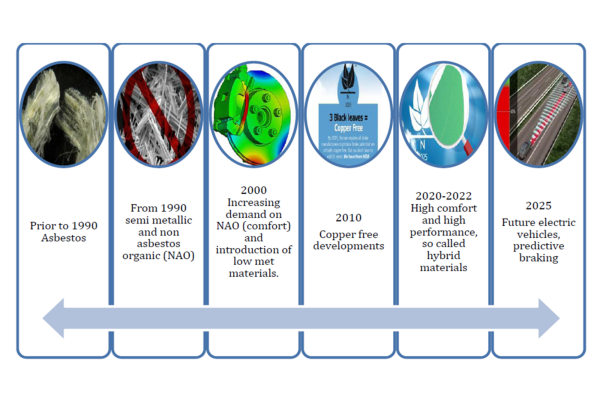
Based on the original basic formula, the adding proportion of resin, reinforced fiber and filler is adjusted according to the adding amount of Gypsum fiber. The recommended proportion is 7-15% (7-15% of the overall formula weight).
Our customers have undergone many experiments and market verification in brake pads formulation. Gypsum fiber can be combined with Fibrous potassium titanate. That is, the pads made of gypsum fiber and Fibrous potassium titanate still has excellent comprehensive performances, reducing the cost and improving brake pads market competitiveness.
Product Name: Gypsum Fiber Item no.:NP-HF02 HS CODE:68099000 Applications: The special material for formulation of Middle and high-value brake pads.
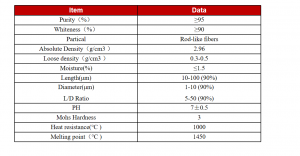
The following figure summarizes an approximate time table of the changes in formulations over the last 40 years in the original equipment market All of them share the same original formulation type based on asbestos. Since asbestos was banned in the 80’s, most car manufacturers requested friction material producers not to use this raw material anymore as it is known to be hazardous for human health A second step towards formulation modification is the reduction on car weight and the increased quality of the engine producing lower noise and vibrations.
Comparative test data in the NAO formula of passenger car disc

Conclusion: The wear result of brake pad: the wear loss of F3>F1>F2, wear loss of F2 formula is the lowest, the wear of F1 formula is less than F3, and Dynamometer test indicates the performance of NHV is improved effectively when braking.
In conclusion: It is suggested that the application of gypsum fiber, in the medium and high end car disc pads NAO formula and the low steel (low steel) formula of commercial car disc pads, with Holland fiber performs in excellence.
Mechanism of reinforcement and toughness

Tiny NP@ Gypsum Fiber shape act as reinforcing and wear-resistant filler. This filler will improve the poor area of coarse fibers.

Processing:
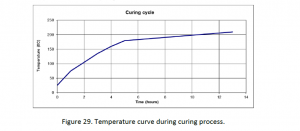
The below Table is showing the compressibility of the produced and tested friction materials.

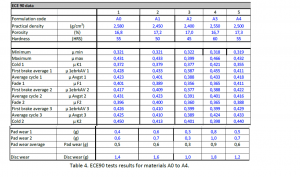

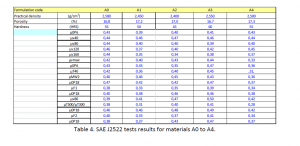
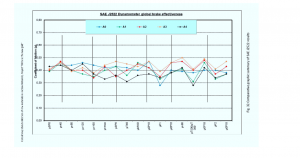
When comparing materials A1 to A4 with the OE material, there are 5 main observations to see.
Dosage of Subsitution of Potassium Titanate:
A4 shows a good friction coefficient, comparable to the OE material (A0) with a high amount of Potassium titanate, a low disc and pad wear and due to its chemical composition. It is also the one with the lower cost as it contains gypsum fiber instead of potassium titanate. Based on this first analysis, it is possible to say that a combination of mineral fibers and gypsum fiber in a ration 1:2 can be used to substitute 60% of potassium titanate in NAO friction materials.
In Summary, Gypsum Fiber provide with:
Below pictures is the illustration of the contact situation between the pad and disc. A transparent disc is moving from left to right. Some of the wear particles pile up against the contact plateaus and create secondary plateaus. A flow of wear particles in the gap between the pad and disc wear the lowlands of the pad through three-body abrasion .
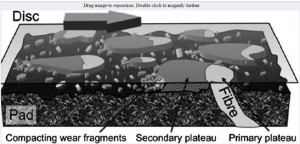

Developed & designed by Buzzing Brands
Copyright © 2023 Anourav Innovative Materials Pvt Ltd, All rights reserved.